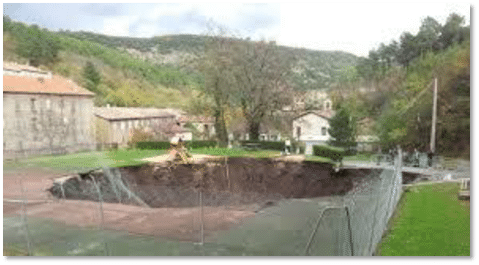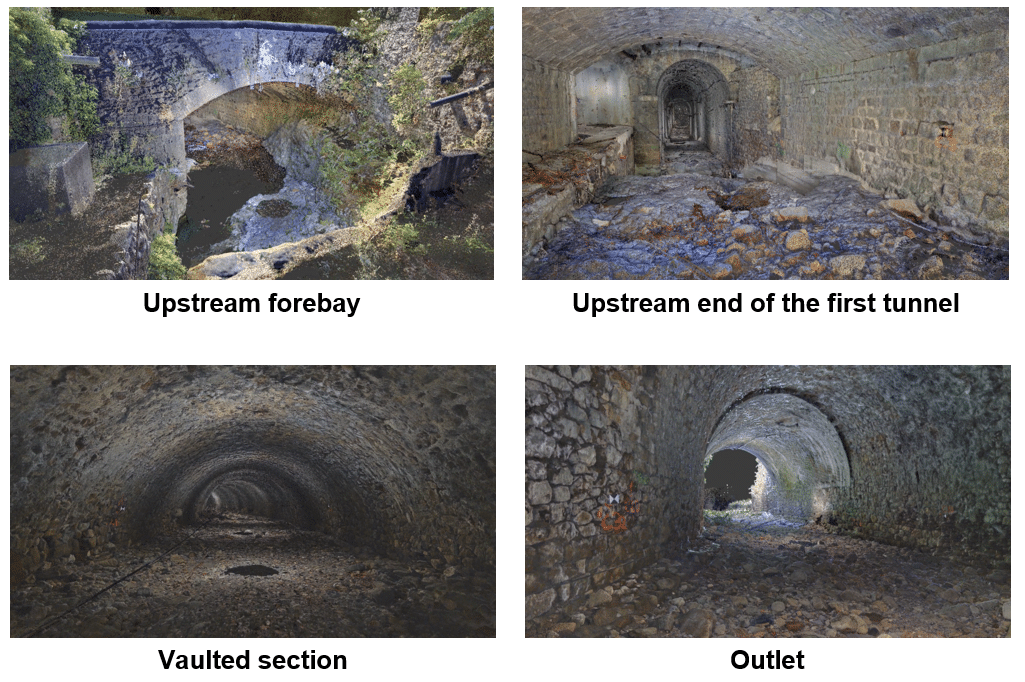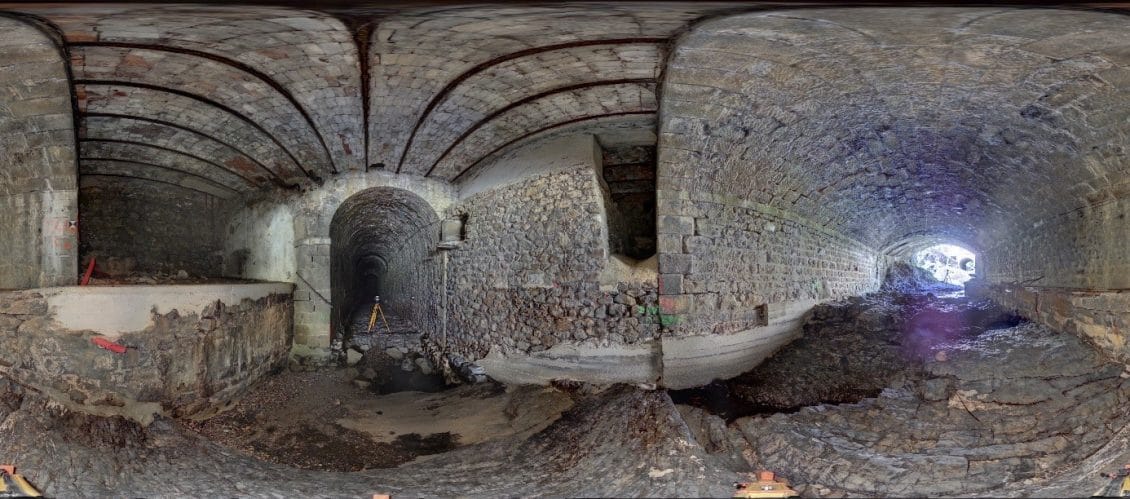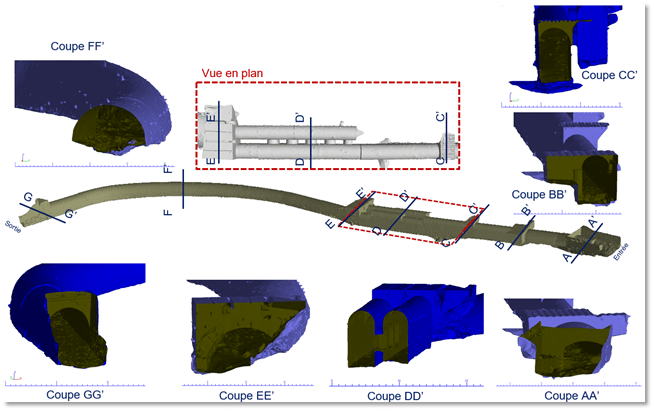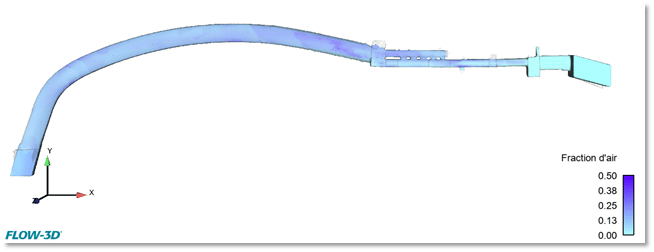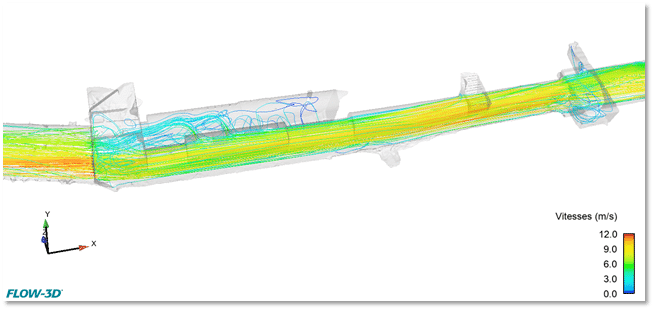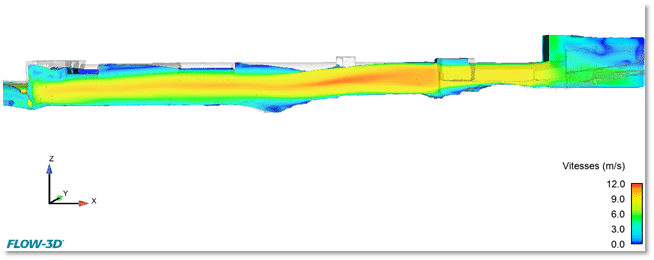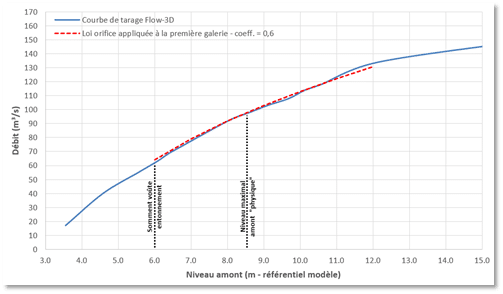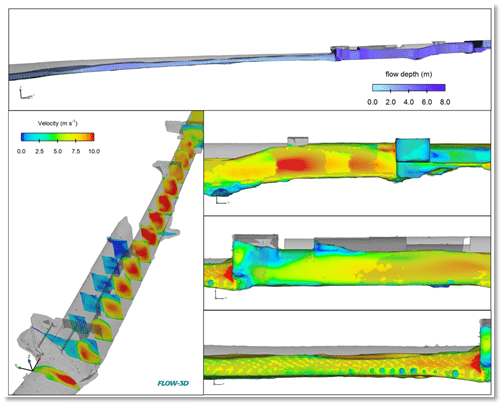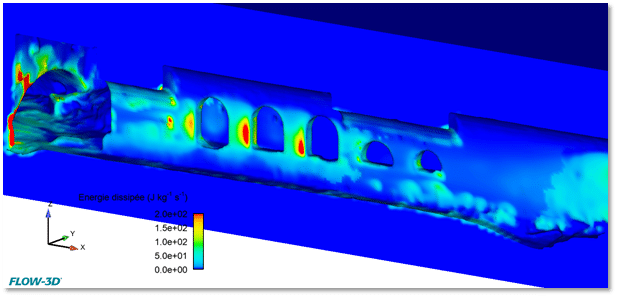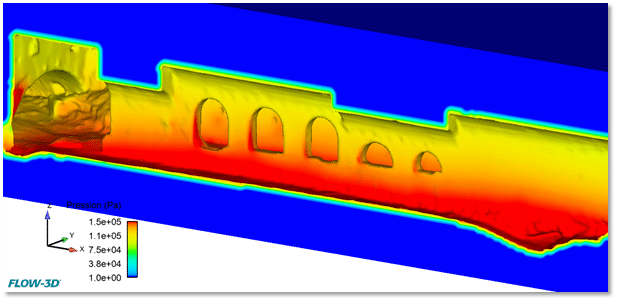
EREDOS PROJECT: Numerical Modeling of Flows in Covered Streams

This article was contributed by Gwenaël CHEVALLET, Marie-Christine GERMAIN, and Sarah LASNE, BRL ingenierie
With more than 60 years of experience in large-scale hydraulic infrastructure, BRL ingenierie is a key player in the field of water engineering both in France and abroad.
The mining industry has led to the construction of many underground structures to manage the exploited territories and to accompany their economic and industrial development. This activity has created voids and has been accompanied by the creation of slag heaps and the filling of valley bottoms with different materials, mainly waste rock. These fillings were preceded by masonry work above the watercourses to maintain the flow through the valley. They were later accompanied by other deposits of materials resulting from the creation of dwellings or infrastructure.
Since the decline of mining activity, these constructions have not received additional maintenance. The November 2012 collapse of a covered brook in Robiac-Rochessadoule (France, Gard) showed that it is important to pay renewed attention to these constructions that have been forgotten over time.
The EREDOS research project, in which BRL ingenierie participates, has the following objectives:
- To develop tools and methods for carrying out diagnostic studies (monitoring system, mechanical and hydraulic behavior, etc.) of these covered streams and the structures that cross them.
- To define risk indicators and intervention protocols.
Within this research framework, BRLi tested the use of 3D CFD to address concerns related to the issues of covered streams. The CFD model was built using FLOW-3D software with the input of a detailed 3D scan of the covered stream (RICHER firm – Geometer-Expert). Our civil and environmental customers now use FLOW-3D HYDRO for these types of modeling and analysis.
3D Scan of the Tunnel
The Valette stream is located in the commune of Robiac-Rochessadoule, 20 km north of Alès in France. The masonry structure has a total length of approximately 250 m. The photos below are presented looking downstream and are taken from the film made with the help of the 3D scanner. The collection of high-resolution geometry data allowed for creating a highly accurate 3D CAD model to be used as input for the FLOW-3D HYDRO simulations.
Hydraulic Model
The main task was a parametric study based on a hydraulic 3D CFD model built with FLOW-3D HYDRO software of the entire underground stream. The main parameters that were tested were:
- Upstream and downstream boundary conditions
- Upstream: imposition of flows or water levels
- Downstream: free outflow or imposed water levels
- Absolute roughness of the tunnels
- Mesh size
- Turbulence models (K-epsilon, K-omega, RNG)
- Consideration of flow aeration phenomena (single fluid [water] + specific air model or two-fluid [water+air] model)
- Numerical options (1st order, 2nd order…)
- Law of walls
In total, more than 40 3D CFD simulations were carried out.
Hydraulic Results
Despite tests varying many parameters (sometimes in very wide ranges), the maximum calculated flows that can pass through the tunnel remain robustly confined to a range of 100-125 m3/s. The simulation results, for this specific premise and these spatial scales, appear not to be particularly sensitive to the parameter space variations explored by the modeler.
The maximum physical flow that can pass through the tunnel is estimated to be about 100 m³/s. By maximum physical flow, we mean a flow that generates an upstream level of about 8 to 9 m (model reference), compatible with the natural topography in the vicinity of the upstream entrances.
The upstream rating curve of the tunnel resulting from this approach was then inserted. In the flow range of 60-120 m³/s, a culvert law applied to the first tunnel with a flow coefficient of 0.6 aligns well with the rating curve obtained using FLOW-3D HYDRO.
Hydraulic Stresses of Structures
This type of 3D CFD model offers the possibility of extracting from the results of the simulations many parameters related to the evaluation of hydraulic stresses on the structure: dynamic pressure, shear stresses, dissipated energy, etc.
These outputs make it possible to diagnose the current state of the structure stability and to design for a possible reinforcement. They constitute input data for the structural analysis of the structures.
In the flow regimes of concern, an alternation of pressurized and free surface flow conditions, it should be noted that it is possible to observe beating phenomena at the origin of depressions on the walls that can prove to be prejudicial.
The figures below illustrate the type of rendering that can reveal pressure solicitations on the hydraulic structures.
Conclusion
High fidelity 3D scan data can be used as the foundation for sophisticated 3D CFD modeling of complex flow conditions using advanced modeling tools such as FLOW-3D HYDRO. Discharge curves and detailed representations of the flow, with the resulting transient pressure conditions on the surrounding infrastructure are all part of the deliverables that naturally result from this kind of study.

